
Today, after a reluctant run with the running posse (I mean - seriously - who wants to crawl out of bed when it's all "spring ahead"? And no matter WHAT the clock says, you KNOW it's really 5:30 a.m. - not 6:30 a.m. at ALL...) In any event, we did it, even though taskmaster Tamara wasn't there today to crack le whip..... And as the sweat began to dry, I took my camera and tripod to UBC Robson Square to take in the exhibit Out From Under: Disability, History and Things to Remember once again. It just gets better each time I see it.
The exhibit does not attempt an academic approach to the history of disability in Canada. Rather, people were invited to respond to the call with an object that might shed light on some aspect of this complex and difficult history. The result is a completely approachable installation that urges deeper thought at each turn.
To paraphrase a press release, 13 everyday objects pay tribute to the resilience, creativity and cultural contributions to the social history of Canadians with disabilities. As a viewer, you are invited to examine these artifacts and the accompanying text that may challenge the way you've looked at subjects such as a shovel, a hanger, a pile of grey non-descript clothing. It's powerful stuff. How I wish I could take you by the hand and lead you through the exhibit which most definitely illuminates a difficult history. For those of you who don't live in Vancouver or Toronto, I'll try to give you a taste. This is from the piece called "Labouring". Here's a quote from the panel text.
"Labouring. By Ruth Ruth Stackhouse.
Hard-working women. May, a housemaid, Audrey, a seamstress and Mathilda, a dining room and laundry worker. Together, they put in perhaps as many as 285,000 hours of labour.
They were never paid a nickel.
It was called "Moral Therapy". Labour-intensive jobs, long hours, no vacation, no retirement package, no pay. From the mid-nineteenth to mid-twentieth centuries, such was the preferred ‘treatment’ for psychiatric patients at the Toronto Hospital for the Insane.
Why? Domestic duties were believed to make women inmates more "tractable and contented". Little is known about such so-called therapeutic benefits. What we do know is that the unpaid labours of inmates like May, Audrey and Mathilda saved hospital administrators very significant amounts of money.
They fed and clothed and cared for each other. In so doing, we hope that these women found dignity and belonging in a place that offered neither."
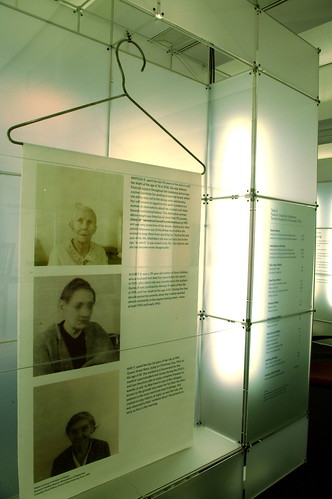
The next images and text are from "Dressing"
"By Sandra Phillips.
No pockets, no designer label and no discernible style. Track suits like this were purchased by the gross to clothe residents of institutions across the country. In institutional settings, people, like clothing, are interchangeable.
Today, despite policies of deinstitutionalization both federally and provincially, thousands of Canadians with intellectual disabilities live in conditions as drab and formless as this track suit. Nearly 500 still live in Ontario's three remaining institutions: Southwestern, Huronia and Rideau Regional Centres.
This installation honours every small claim to individuality attempted in institutional confinement – whether by gesture, deed or some expression of personal style."

"Naming" is particularly poignant when you think about the fact that everyday speech still uses some of these words today in an altogether too pejorative way...
"Remembering" presented a painfully sad story about Kristen Anne Inwood, one of the 36 infants who died in the cardiac ward Toronto's Hospital for Sick Children in 1981.
"Cause of death was a deliberate overdose of the powerful heart drug digoxin. Kristen was 18 days old.
In medical slang, Kristen had been designated as “FLK”, an acronym for "funny looking kid". A chromosome exam was ordered while her cardiac abnormalities were assessed.
Kristen's death was one of 36 infant deaths that occurred on the hospital's cardiac ward between June 1980, and March 1981. The Royal Commission of Inquiry into Certain Deaths at the Hospital for Sick Children (the "Grange Inquiry") conducted 191 days of hearings probing the circumstances of these deaths.
The Commission concluded that Kristen had been murdered, but was unable to make any determination of responsibility. "
And then history starts to take a turn for the better as people with disabilities start to blaze trails, and communities of people with disabilities start to organize and rally.

The comment book was bursting with praise. Rightly so.
And while there are still many battles to be fought, things have shifted in Canada over the years in terms of the recognition, acknowledgement and acceptance of people with disabilities. Although it's interesting to note that Catherine Frazee, a major part of the curatorial team had to travel from Toronto to Vancouver via AMTRAK in the United States. Why? Because Canada's Via Rail can't accommodate a person in a wheelchair.
So clearly, we've still got a long way to go......






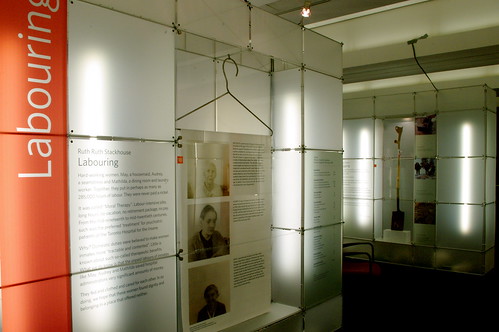


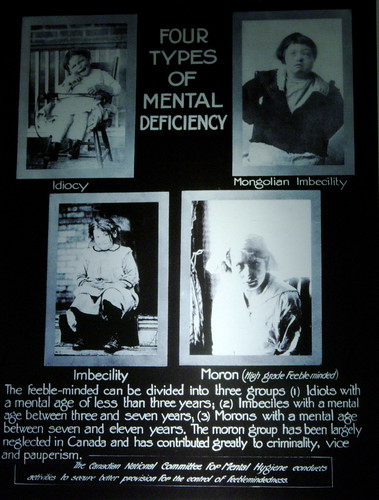
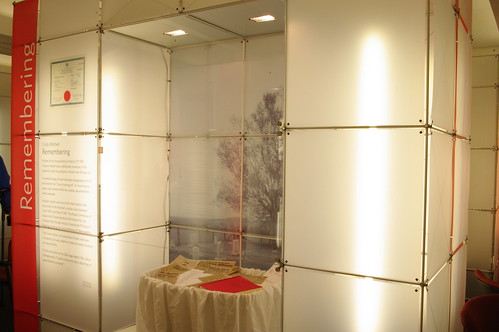
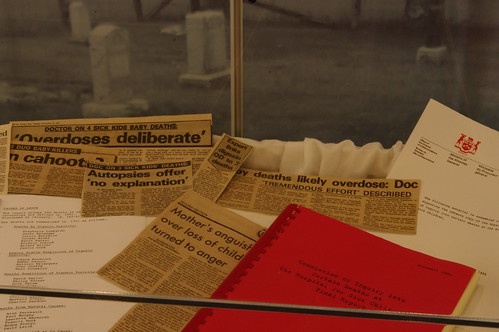

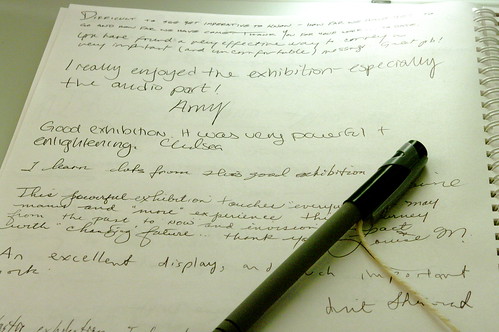




Thanks for this - now on my list of must-sees!
ReplyDeletexx
Thanks for the fabulous review, although you did leave out one very important detail. Pray tell us more about the critically-acclaimed audio tour that accompanies the exhibit! Some very fine talent wrapped into those morsels of sound...
ReplyDeleteThank you for sharing this & for exposing me to something that I unfortunately would otherwise have missed!
ReplyDelete@bunkle - I'm so glad you're going to check it out! Do pick up one of the hand held wands and take an audio tour and let me know what you think!
ReplyDelete@cfrazee - you are too kind. What a pleasure it has been to work on this project with the likes of your wonderful self!!
@Lori - I'm so glad you enjoyed this post. I hope you get to take in the exhibit in person.
Hi Teri, great blog on the Out from Under Exhibition, and fantastic photos, wow! yes I very much enjoyed the Plain Language audio tour which is also available on the exhibition website it really brings things to life. With the dulcet tones of your good self, David, and Jake, in lively conversational style! Good to see you last week! An update on the continuing VIA RAIL saga, their very own accessibility encouragement Fan Page on Facebook ( :
ReplyDeleteMAKE VIA RAIL ACCESSIBLE BY 2012
http://integrialmedia.blogspot.com/2010/03/make-via-rail-accessible-by-2012.html